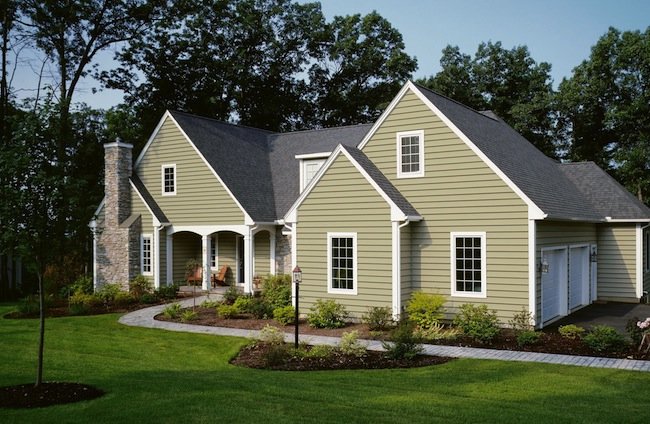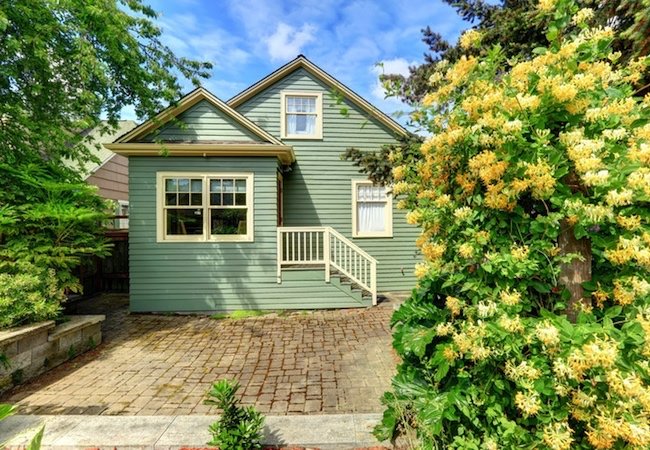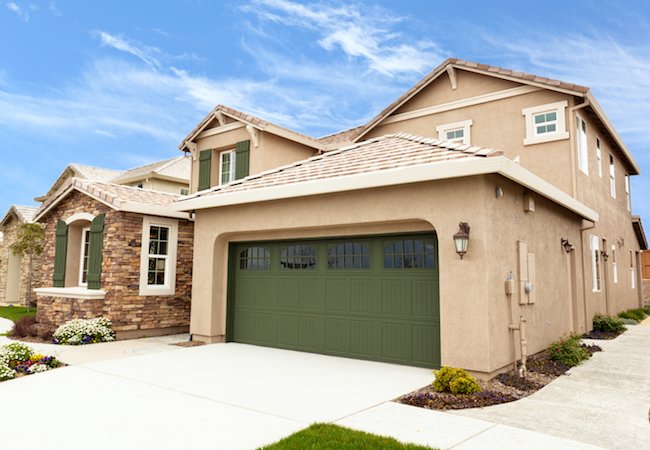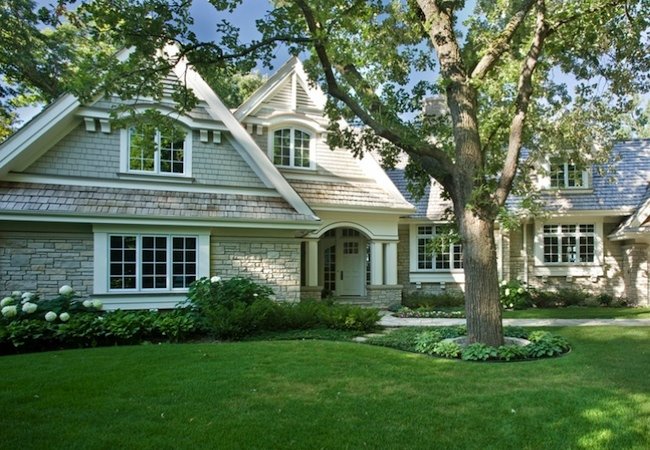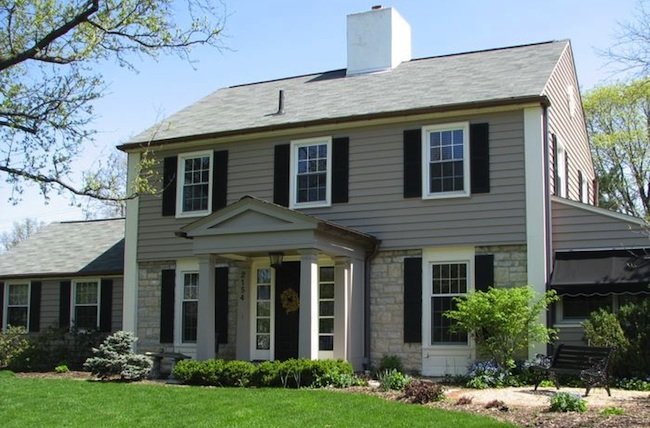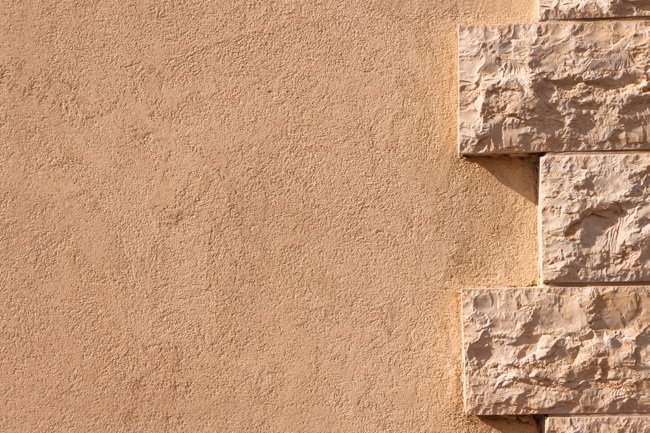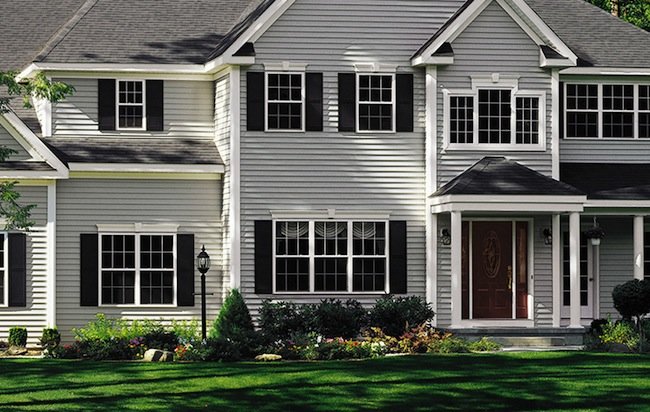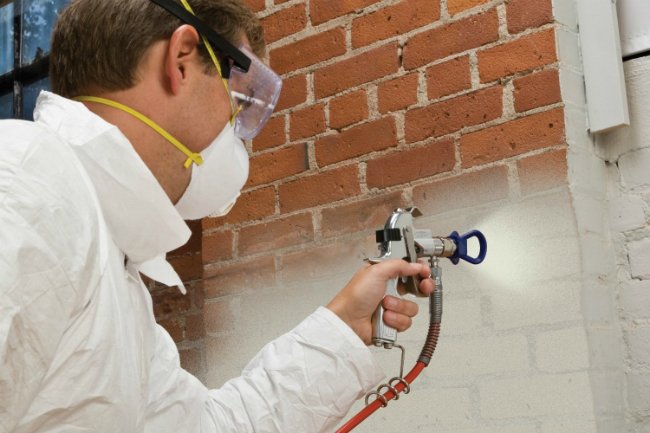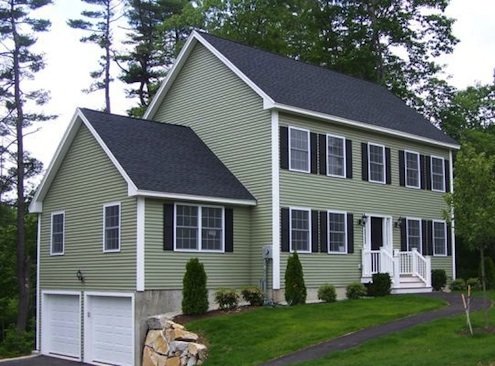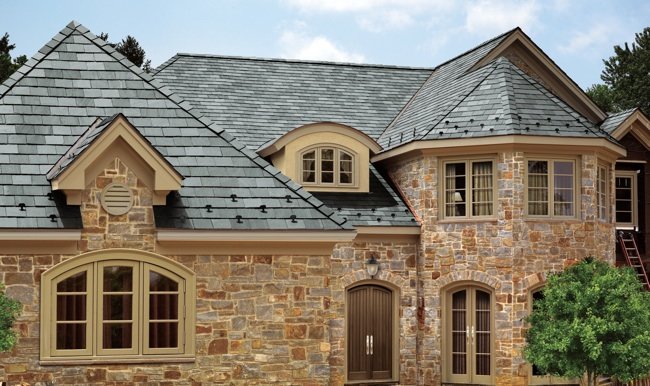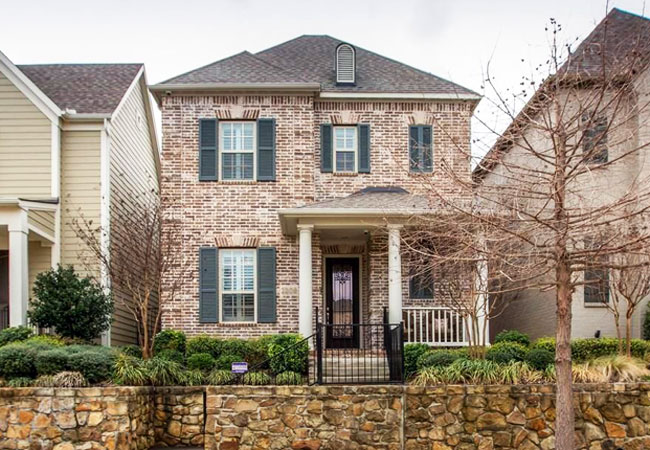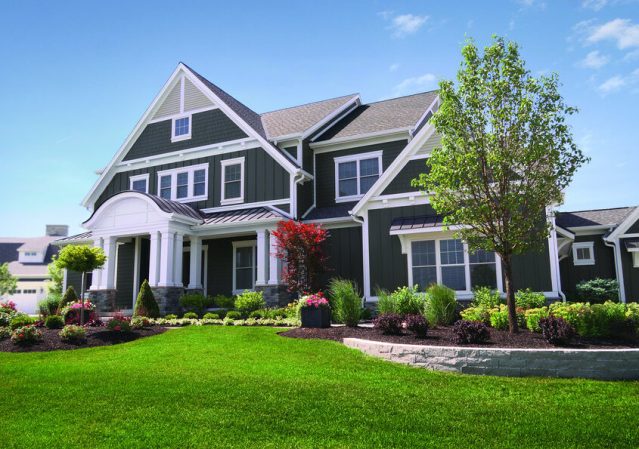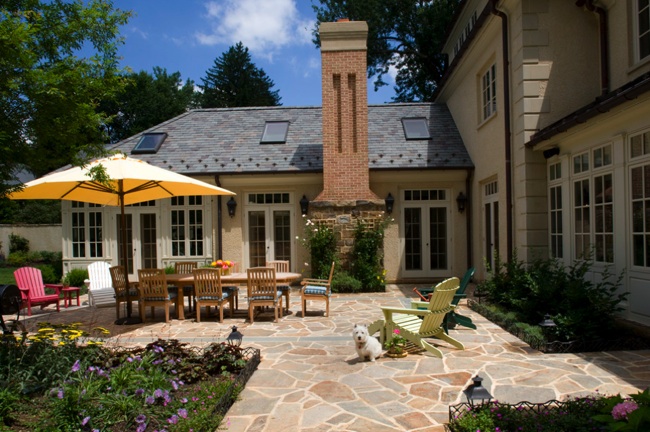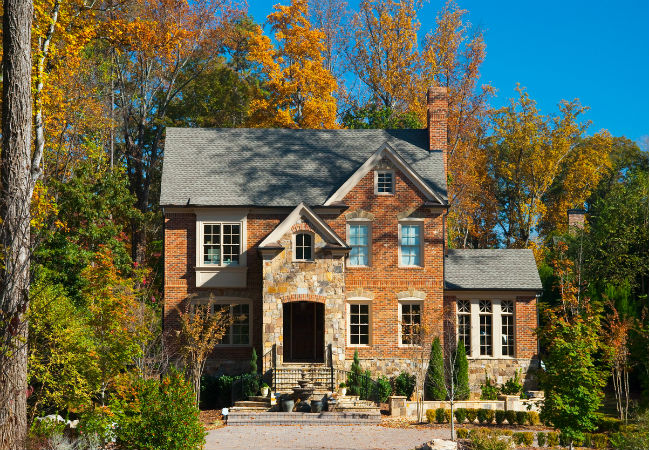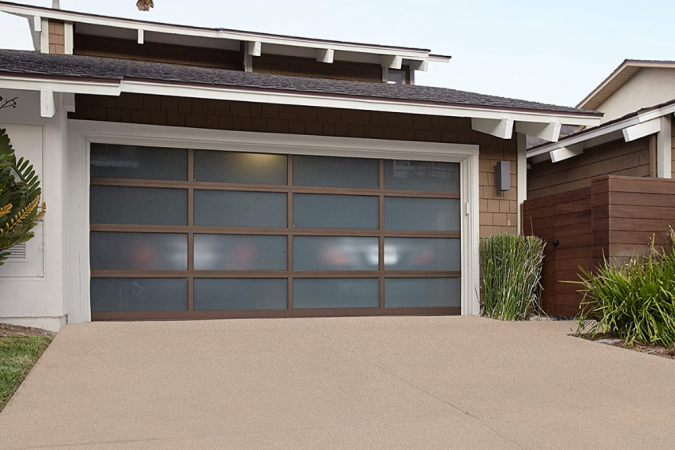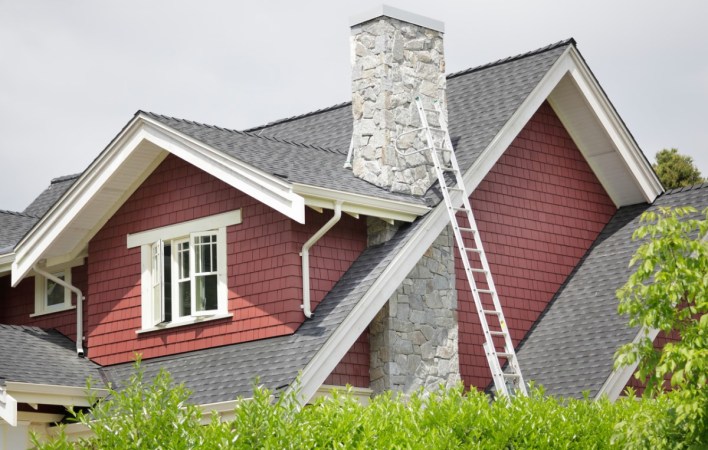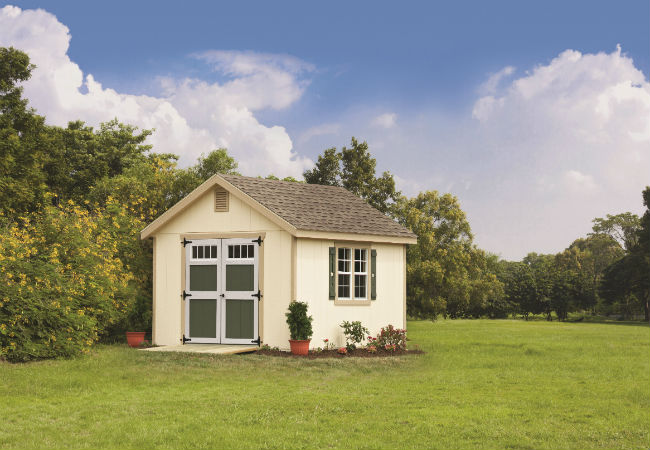We may earn revenue from the products available on this page and participate in affiliate programs. Learn More ›
The exterior of your home faces a ceaseless barrage of threats from the hot sun, strong winds, precipitation in all its forms, and the bitter winter cold. As such, your house siding must be strong and durable. But that doesn’t mean it can’t be beautiful even decades into its life. Advancements in the manufacture of siding materials and their installation have improved both the look and longevity of products for the exterior of today’s home.
If you’re in the market for house siding but don’t know where to begin your search, this guide can help you learn more about the pros and cons of the most popular materials, so you can make an informed choice about which option best suits your house style and local climate, not to mention your availability or willingness to perform ongoing maintenance tasks as the seasons come and go.
NOTE: Some siding is better suited to certain house styles than others. But that doesn’t mean you can’t find a the look of traditional wood lap siding in a fiber cement or vinyl product. Do your research on house style before you set out choosing new siding. You’ll also want to consider your climate—including average temperatures throughout the seasons, proximity to salty ocean air, likelihood of exposure to severe weather, such as blizzards or hurricanes, plus other environmental factors like wind, rain and humidity.
Here is a list of the most popular exterior siding options, with features, benefits, pros and cons:
STUCCO
Don’t be fooled into thinking the only look you can achieve is that of the typical hacienda- or tudor-style house. Although stucco is most often whitewashed, a varied range of textures and colors is within reach.
- While materials are not pricey, labor costs can be. Stucco application usually requires three coats. The initial “scratch coat” provides adhesion to the building. The “brown coat”, which comes second, is responsible for creating an even surface. Finally, the “finish coat” determines the stucco’s outward appearance.
- The breathability factor of stucco allows moisture to evaporate quickly, making it ideal for areas of the country with normal precipitation. Not so much in rainy parts of the country, where the wood framing can be susceptible to moisture and rot.
- Stucco typically lasts between 50 and 80 years. When it’s time to refresh yours, sandblast away the old layer and start from scratch. Painting it can lead to a host of moisture-problems down the line.
STONE VENEER
Made from a mixture of portland cement, lightweight aggregate, and iron-oxide pigments, today’s manufactured stone veneer products have become a popular siding option for many homeowners. While the look is a dead ringer and the cost is considerably less ($5 to $10 a square foot cheaper), the product does not offer the durability of natural stone.
- Manufactured veneer is less expensive to install than natural stone, and much lighter in weight.
- Drawbacks include durability— because the siding is made of concrete, it breaks more easily than natural stone.
FIBER CEMENT
Fiber-cement siding composition may vary from company to company, but the basic recipe is Portland cement, sand, and cellulose (wood) fibers. Wood fiber helps prevent cracking, as does a special curing process that leaves fiber cement with a low moisture content. Fiber-cement siding is low-maintenance, impact-resistant, and available in finished or painted options.
- Fiber-cement siding has the durability of cement, a class 1A fire rating, is impervious to wood-boring insects, does not rot, and is resistant to deterioration from salt and ultraviolet rays.
- After about 15 years, refinishing becomes necessary, but maintenance duties are light otherwise.
- A host of textures can be found as well, and the siding may be colored to virtually any hue the homeowner desires. Some fiber cement siding products are made to resemble wood, natural fieldstone, stacked flagstone, or brick.
WOOD
Wood siding boasts a timeless beauty, and many homeowners value the way its appearance gradually changes in subtle ways. Whether it is vertical siding like board and batten, or horizontal siding like clapboards, shakes, and shingles, there are various wood species and grades to consider. Wood will, however, require a high level of maintenance to retain its beauty and effectiveness.
- Before settling on a siding material, ask your builder or installer about rot resistance, splitting, checking or cupping. The choices of wood will be many—pine, spruce, fir, cedar, redwood—but only a few might be good for your region.
- Some companies offer pre-primed planks, shakes, and shingles. These boards come primed on one or both faces and are sealed and protected from the minute they arrive on site.
- A good wood siding should last for many, many years, but it must be properly maintained. Proper maintenance includes power washing and staining and sealing whenever the heat of the sun fades the finish, or when moisture starts to turn to mold or mildew.
BRICK (MASONRY)
In addition to its aesthetic appeal, durability makes brick siding a popular choice. Under normal conditions, brick siding will last the life of the building with little more than an occasional wash with the hose. Although brick siding is considered permanent, masonry does deteriorate, generally at the mortar joints, which are the gaps between bricks that are filled with mortar.
- Masonry veneer walls consist of a single non-structural external layer of masonry work, typically brick, backed by an air space.
- Because the masonry veneer is non-structural, it must be tied back to the building structure to prevent movement under wind and earthquake loads.
- Buildings with masonry veneer walls can be better at cooling down during extended periods of hot weather than framed and sided buildings.
VINYL
Long saddled with a bad reputation, today’s vinyl siding is weather- and insect-proof, fade-resistant, and virtually indestructible under normal circumstances. It also remains one of the cheapest materials to install.
- It comes in a range of colors and designs, some of which closely resemble wood grain, suitable not only for new construction, but also for replicating the look of vintage siding in renovations of older homes.
- Although it’s often touted as maintenance free, vinyl siding does require some occasional work. Depending on how your house is situated, mold or grime might accumulate. Vinyl siding will eventually fade, but usually only slightly.
- Though colorfast and resistant to insects and rot, vinyl siding is not maintenance free: Its vulnerability to weather damage makes occasional repairs necessary. The price tag is low enough to have enticed many, and another big selling point is its relative ease of installation.
